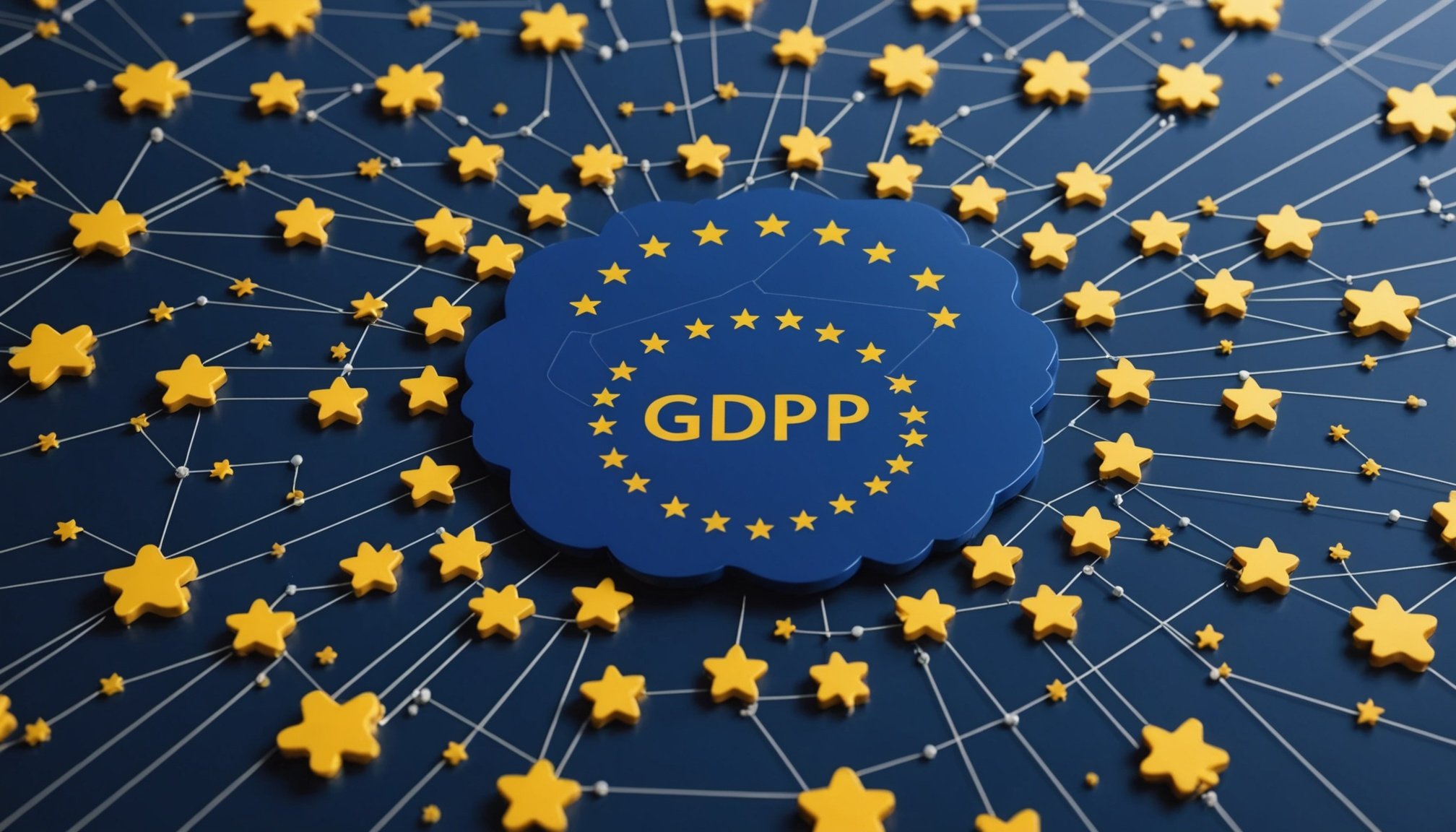Ensuring GDPR Compliance: A Comprehensive Guide for Businesses
In the era of digital transformation, data has become the lifeblood of every business. However, with the increasing reliance on data, the need for robust data protection measures has never been more critical. The General Data Protection Regulation (GDPR), implemented by the European Union in 2018, sets a stringent standard for how personal data must be handled. For companies operating within or interacting with the EU, ensuring GDPR compliance is not just a legal necessity but also a cornerstone of building trust with customers and maintaining a strong reputation.
Understanding the GDPR Basics
Before diving into the steps for ensuring GDPR compliance, it’s essential to grasp the fundamental principles of the regulation.
In parallel : Ultimate handbook for legally managing uk employee transfers to international locations
Key Concepts of GDPR
- Personal Data: Any information that can identify a person, such as names, email addresses, and IP addresses.
- Data Subject: The individual to whom the personal data pertains.
- Data Controller: The entity that determines the purposes and means of processing personal data.
- Data Processor: The entity that processes personal data on behalf of the data controller.
- Consent: The explicit agreement from the data subject to process their personal data.
- Data Protection Officer (DPO): An expert responsible for overseeing data protection within an organization.
Why GDPR Compliance Matters
GDPR compliance is crucial for several reasons:
- Legal Consequences: Non-compliance can result in hefty fines, up to €20 million or 4% of the company’s global annual turnover.
- Reputation: Breaches and non-compliance can severely damage a company’s reputation and trust with customers.
- Business Continuity: Compliance ensures that businesses can continue to operate without legal interruptions.
Conducting a Data Audit
The first step towards GDPR compliance is to understand what personal data your company collects, how it is processed, and where it is stored.
Also to discover : Comprehensive handbook for legal employee biometric data collection in the uk
What to Include in Your Audit
- Data Mapping: Create a detailed map of all personal data flows within your organization.
- Identify the types of personal data collected.
- Determine the sources of this data.
- Track how the data is processed and stored.
- Identify who has access to the data.
- Data Inventory: Maintain an inventory of all personal data processing activities.
- Document the purpose of each processing activity.
- List the legal basis for processing (e.g., consent, contractual necessity).
- Note the retention periods for each type of data.
Example of a Data Audit
Consider a retail company that collects customer information for marketing purposes. The audit might reveal:
- Data Collected: Names, email addresses, purchase history.
- Sources: Website forms, in-store sign-ups, social media.
- Processing: Data is processed for marketing campaigns and customer segmentation.
- Storage: Data is stored on cloud servers and accessed by the marketing team.
Implementing Data Protection Policies
Clear and comprehensive data protection policies are the backbone of GDPR compliance.
Key Policies to Implement
- Privacy Policy: A transparent document outlining how personal data is collected, used, and protected.
- Include information on data subjects’ rights.
- Explain the legal basis for processing.
- Provide contact details for the DPO.
- Data Retention Policy: Define how long personal data is retained and the criteria for erasure.
- Ensure that data is not kept longer than necessary.
- Establish procedures for secure erasure.
- Data Breach Policy: Outline procedures for responding to data breaches.
- Include steps for containment, notification, and post-breach review.
Example of a Privacy Policy
A company’s privacy policy might include the following:
"We collect your name and email address when you sign up for our newsletter. This data is used solely for sending you updates about our products and services. You have the right to withdraw your consent at any time. For more information, contact our Data Protection Officer at [DPO Email]."
Obtaining and Managing Consent
Consent is a critical component of GDPR compliance, especially when it comes to processing personal data.
What Constitutes Valid Consent?
- Explicit: Consent must be given through a clear affirmative action.
- Informed: Data subjects must be fully aware of what they are consenting to.
- Specific: Consent must be specific to each processing activity.
- Revocable: Data subjects must be able to withdraw their consent easily.
Best Practices for Consent Management
- Clear Language: Use simple, understandable language in consent forms.
- Granular Options: Allow data subjects to consent to different types of processing separately.
- Record Keeping: Maintain records of all consents obtained.
Example of Consent Management
A company might use a consent form that looks like this:
"Do you consent to receiving marketing emails from us?
Yes / No
Do you consent to sharing your data with our partners for personalized offers?
Yes / No"
Ensuring Data Security
Data security is paramount to protecting personal data and maintaining GDPR compliance.
Security Measures to Implement
- Encryption: Encrypt personal data both in transit and at rest.
- Access Controls: Implement strict access controls to ensure only authorized personnel can access personal data.
- Regular Updates: Keep all software and systems up-to-date with the latest security patches.
- Training: Provide regular training to employees on data security best practices.
Example of Security Measures
A company might implement the following:
- Multi-Factor Authentication: Require employees to use two-factor authentication to access systems containing personal data.
- Firewalls and Intrusion Detection: Use robust firewalls and intrusion detection systems to protect against cyber threats.
Appointing a Data Protection Officer (DPO)
A DPO is a key figure in ensuring GDPR compliance within an organization.
Responsibilities of a DPO
- Monitoring Compliance: Ensure that the organization complies with GDPR regulations.
- Advising on Data Protection: Provide advice on data protection practices and policies.
- Cooperating with Authorities: Act as a point of contact for data protection authorities.
Qualifications for a DPO
- Expertise: The DPO should have in-depth knowledge of data protection laws and practices.
- Independence: The DPO must be independent and not have any conflicts of interest.
- Resources: The DPO should have the necessary resources and support to perform their duties effectively.
Conducting a Data Protection Impact Assessment (DPIA)
A DPIA is a process to identify and mitigate the risks associated with processing personal data.
When to Conduct a DPIA
- New Processing Activities: When introducing new processing activities that are likely to result in a high risk to the rights and freedoms of data subjects.
- Significant Changes: When making significant changes to existing processing activities.
Steps in a DPIA
- Describe the Processing: Clearly describe the processing activity.
- Assess the Necessity and Proportionality: Determine if the processing is necessary and proportionate to the purpose.
- Identify Risks: Identify potential risks to data subjects.
- Mitigate Risks: Implement measures to mitigate identified risks.
- Consult with Stakeholders: Consult with relevant stakeholders, including data subjects and the DPO.
Example of a DPIA
A company planning to implement a new customer profiling system might conduct a DPIA as follows:
"Processing Activity: Customer Profiling
Description: Collecting and analyzing customer purchase history to offer personalized recommendations.
Risks Identified: Potential for biased recommendations, privacy invasion.
Mitigation Measures: Implementing robust data anonymization, ensuring transparency in how data is used."
Maintaining Compliance Through Ongoing Monitoring
GDPR compliance is not a one-time task but an ongoing process.
Continuous Monitoring
- Regular Audits: Conduct regular audits to ensure compliance with GDPR.
- Employee Training: Provide ongoing training to employees on GDPR best practices.
- Policy Reviews: Regularly review and update data protection policies.
Incident Response
- Data Breach Response Plan: Have a plan in place for responding to data breaches.
- Include steps for containment, notification, and post-breach review.
- Notification: Notify the relevant data protection authority and affected data subjects within 72 hours of discovering a breach.
Practical Insights and Actionable Advice
Compliance Checklist
Here is a comprehensive checklist to help you ensure GDPR compliance:
- Conduct a thorough data audit.
- Implement clear data protection policies.
- Obtain and manage consent appropriately.
- Ensure robust data security measures.
- Appoint a qualified DPO.
- Conduct DPIAs for high-risk processing activities.
- Maintain ongoing compliance through regular monitoring and training.
Table: Key GDPR Compliance Requirements
| Requirement | Description |
|---|---|
| Data Audit | Map and inventory all personal data flows within the organization. |
| Data Protection Policies | Implement policies for privacy, retention, and breach response. |
| Consent Management | Obtain explicit, informed, and specific consent from data subjects. |
| Data Security | Implement encryption, access controls, and regular updates. |
| DPO Appointment | Appoint a qualified DPO to monitor compliance and advise on data protection. |
| DPIA | Conduct impact assessments for high-risk processing activities. |
| Ongoing Monitoring | Regularly audit, train employees, and review policies to maintain compliance. |
Quotes from Experts
- “GDPR compliance is not just about avoiding fines; it’s about building trust with your customers and ensuring the long-term sustainability of your business.” – Dr. Ann Cavoukian, Former Information and Privacy Commissioner of Ontario.
- “The key to GDPR compliance is transparency and accountability. Organizations need to be clear about what data they collect and how it is used, and they must be able to demonstrate this.” – Elizabeth Denham, UK Information Commissioner.
Ensuring GDPR compliance is a multifaceted task that requires a thorough understanding of the regulation, robust policies, and ongoing monitoring. By conducting detailed data audits, implementing clear data protection policies, obtaining and managing consent, ensuring robust data security, appointing a qualified DPO, conducting DPIAs, and maintaining ongoing compliance, companies can guarantee their adherence to GDPR standards.
In the words of Viviane Reding, the former EU Justice Commissioner who played a key role in drafting the GDPR: “The GDPR is a regulation that aims to give citizens control over their personal data. It is a regulation that aims to make sure that companies use personal data in a way that is transparent and fair.”
By following these steps and maintaining a commitment to data privacy and protection, businesses can not only comply with the GDPR but also build a strong foundation for ethical and responsible data management.











